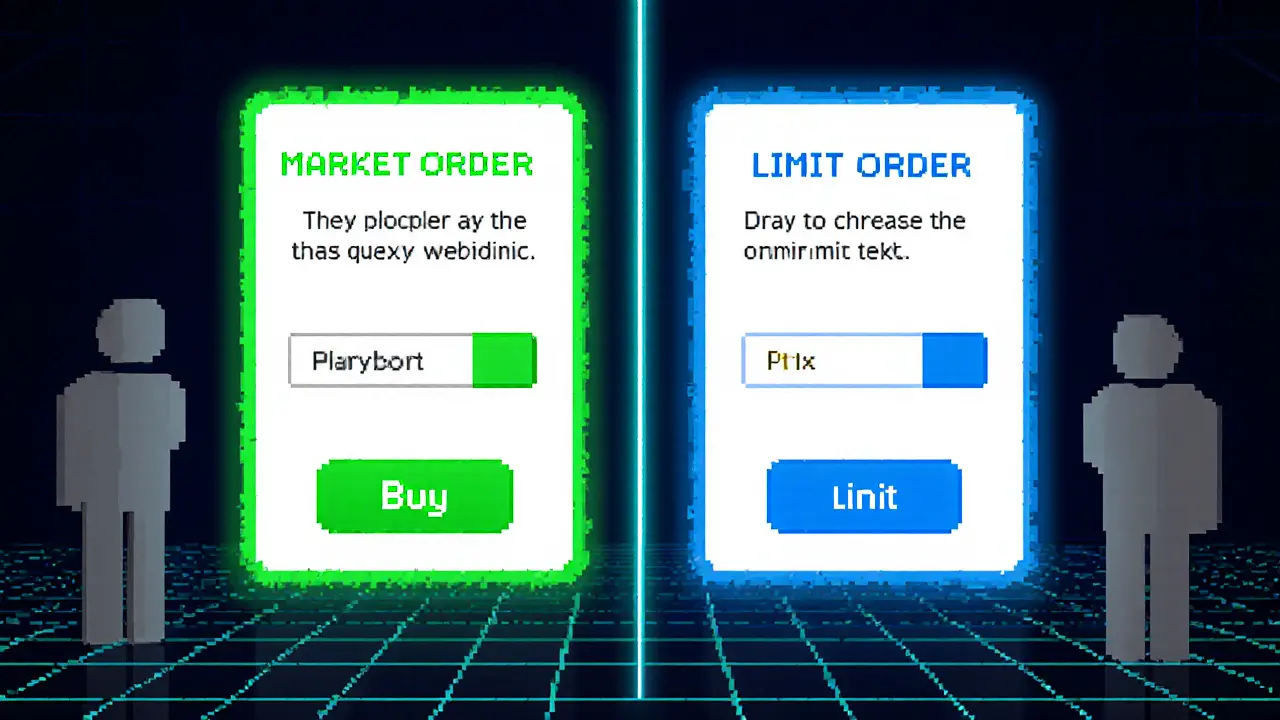Limit Orders: How They Work on Decentralized Exchanges
When working with limit orders, pre‑set trade instructions that execute only at a chosen price. Also known as price‑triggered orders, they let traders lock in entry or exit points without watching the market 24/7. A limit order is a type of instruction you send to an exchange; the order sits in the system until the market hits your target price, then it becomes a trade. This design reduces surprise fills and helps you stick to a plan. In practice, you tell the platform, “Buy 1 ETH only if it drops to $1,800,” or “Sell 500 USDC when it rises to $1.02.” The exchange respects that price, no matter how volatile the ticker gets.
Key concepts behind limit orders
Limit orders live inside the order book, the list of all open buy and sell orders on a market. The book matches opposite sides—buyers looking to pay a certain price with sellers ready to accept that price. When your limit price matches an opposite order, the trade executes automatically. This relationship creates the semantic triple: limit orders require an order book to match buyers and sellers. If the book is thin, your order may sit idle for a while, which is why liquidity matters. Another common order type is the market order, an immediate trade that fills at the best available price. Market orders ignore price limits; they grab whatever liquidity is left, often causing price slippage. Because of that, many traders use limit orders to avoid the surprise of a market order’s impact. The contrast between the two forms forms a second triple: market orders influence price slippage, which limit orders aim to avoid. A third related tool is the stop order, which becomes a market (or limit) order once a trigger price is reached, adding a safety net for sudden moves.
Decentralized exchanges (DEXs) bring a twist to this picture. Unlike centralized platforms, DEXs run on smart contracts, so there’s no single authority overseeing the order book. Instead, liquidity pools and automated market makers (AMMs) provide the depth needed for orders to fill. Some DEXs now integrate hybrid order books that let you place true limit orders directly on‑chain. This setup creates the third triple: decentralized exchanges enable limit orders without a central authority. The benefit is greater transparency—you can verify the contract code and see exactly how orders are matched. The trade‑off can be higher gas fees for each order submission, but the ability to lock in a price on a public ledger often outweighs that cost for risk‑averse traders.
Whether you’re a beginner learning the ropes or a seasoned quant fine‑tuning execution strategies, understanding how limit orders interact with the order book, market orders, and stop orders is essential. Below you’ll find a curated set of articles that dive into real‑world examples, technical walkthroughs, and compliance considerations around limit orders on DEXs. Use them to sharpen your trading plan, spot hidden fees, and make the most of the tools the crypto market offers.
Market Orders vs Limit Orders: How They Work in Order Books
Posted By Tristan Valehart On 9 Jan 2025 Comments (19)

Learn the key differences between market and limit orders, how they work in the order book, and when to use each for better trade execution.
READ MORE